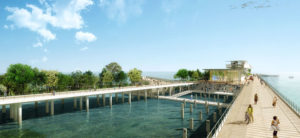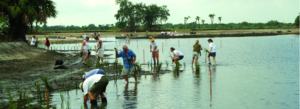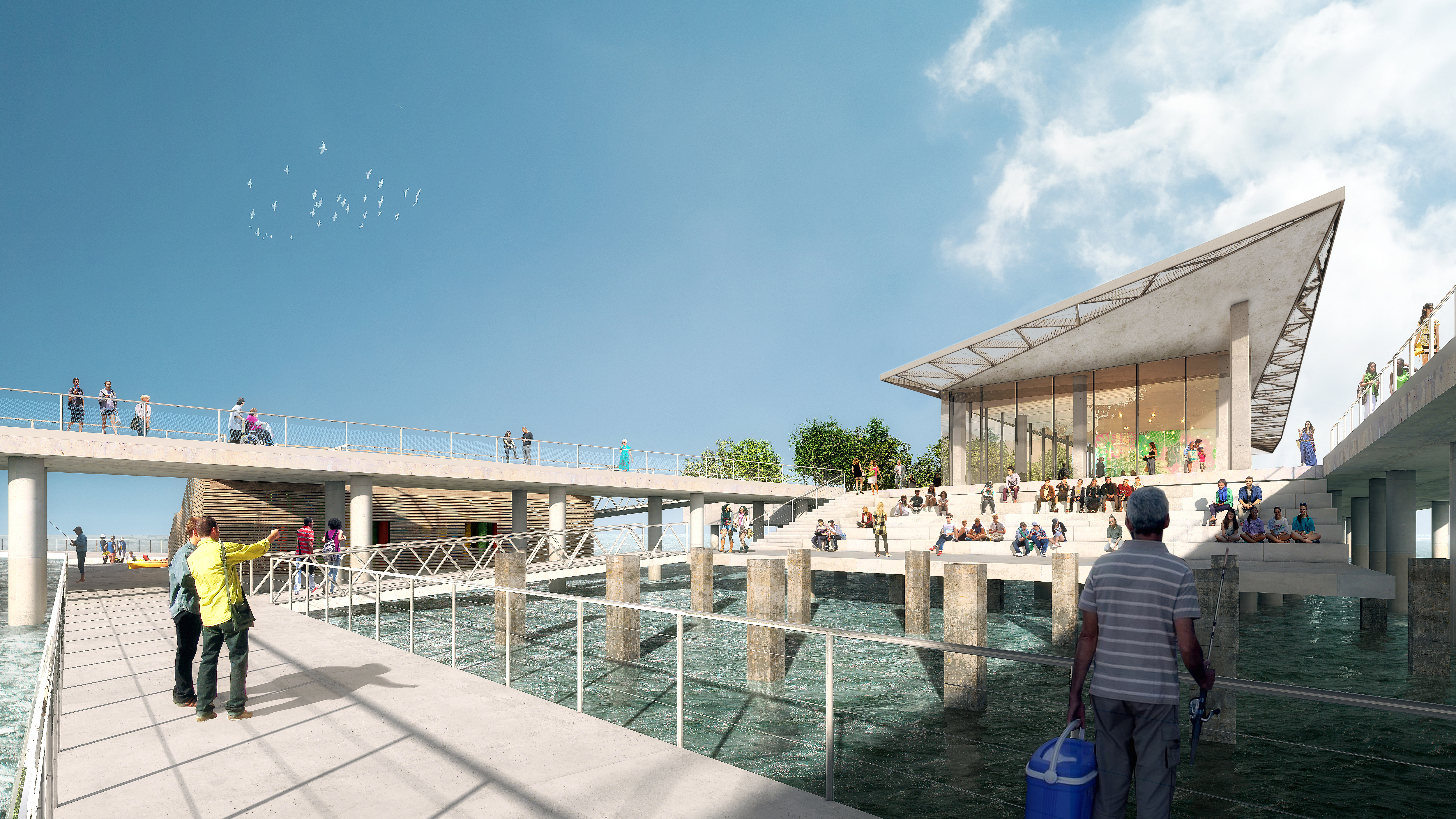
Courtesy Tampa Bay Watch.
What do you do 25 years after founding a not-for-profit in your spare bedroom and building an organization that does hundreds of volunteer events involving thousands of participants every year?
If you’re Capt. Peter Clark, you start over again – this time in a high-profile venue as the Tampa Bay Watch Discovery Center at the St. Pete Pier where more than 1.7 million visitors are expected annually.

Rendering courtesy City of St. Petersburg.
After signing a five-year lease with the city last May, Tampa Bay Watch started fundraising to furnish the interior of the 3,000-square-foot space. The Discovery Center will eventually include an exhibit hall focused on the story of Tampa Bay, indoor and “wet” classroom spaces offering programs for both adults and children, hands-on learning, a living shoreline, and a boat for eco-tours of the bay.
“It’s an opportunity to reach people we might never see at an event and be more convenient for people who already are involved in our education programs,” Clark said.
Formally named the Tampa Bay Watch Discovery Center presented by the Milkey Family Foundation, Tampa Bay Watch also has several sponsors who have donated more than $100,000 to the discovery center, including the Duke Energy Foundation which will fund the living shoreline exhibit and a coastal restoration project that will be filmed as part of the exhibit that tells the Tampa Bay story.

Photo courtesy Tampa Bay Watch.
It’s also the perfect place to continue Tampa Bay Watch’s mission of recruiting volunteers to get involved in restoration efforts – who then become supporters of other efforts to protect and restore the bay. As former staff for the Agency on Bay Management, Clark had been in the field as a volunteer while working as a professional at the Tampa Bay Regional Planning Council. “I could see a real need to get more of the community outside and involved.”
Plans for new activities at the St. Pete Pier haven’t been finalized but will continue the mission of introducing residents to Tampa Bay with programs that provide benefits to the bay. “One of the most exciting things about what we do is watching people – particularly kids – take ownership of their volunteer efforts,” he said. “They’re so excited about helping grow marsh grasses and then transplant them. We’re doing important work, but even more importantly, we’re teaching people that they need to protect Tampa Bay.”
Over the past 25 years, Tampa Bay Watch has created multiple high-profile events that get volunteers involved in restoration, monitoring or just plain fun programs including:
- Restoration projects which vie for the largest number of volunteers – currently set at Rock Ponds where more than 400 volunteers turned out on a single Saturday morning to plant marsh grasses at the largest restored site in the region.
- A “couple of miles” of oyster reefs placed off MacDill Air Force Base to prevent erosion and filter water.
- The Great Bay Scallop Search, which can accommodate up to 200 swimmers snorkeling transects searching for the elusive shellfish.
- “Grasses in Classes,” where students in more than 20 middle and high schools across the region grow marsh grasses to be planted in restored sites.
- Nine weeks of summer camps open to students ages eight to 15 introducing kids to estuarine ecosystems.
- The Tampa Bay Watch Tarpon Rodeo held every June.
- A Day on the Bay, a half-day kayak eco-tour with trained staff as guides, scheduled for March 12 to 14.

Photo Courtesy US Air Force.

Photo by Victoria Parsons.
